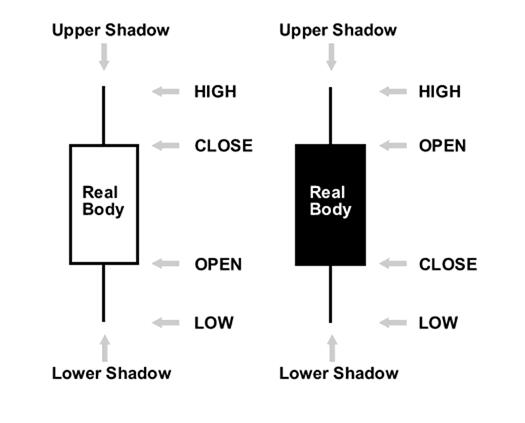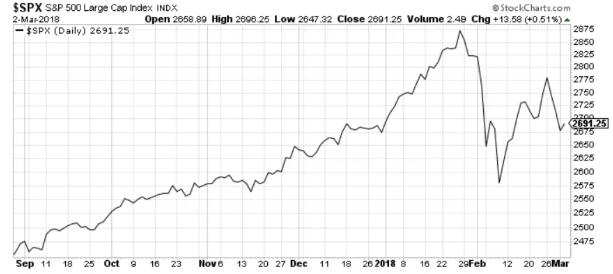Contents
That means both profits and losses can be hugely magnified compared to your outlay, and that losses can exceed deposits. For this reason, it is important to pay attention to the leverage ratio and make sure that you are trading within your means. CFD trading is defined as ‘the buying and selling of CFDs’, with ‘CFD’ meaning ‘contract for difference’. CFDs are a derivative product because they enable you to speculate on financial markets such as shares, forex, indices and commodities without having to take ownership of the underlying assets. Trading contracts for difference is a way of speculating on financial markets that doesn’t require the buying and selling of any underlying assets. Find out everything you need to know to understand CFD trading, from what it is and how it works to short trades, leverage and hedging.
CFDs are traded on margin meaning the broker allows investors to borrow money to increase leverage or the size of the position to amply gains. Brokers will require traders to maintain specific account balances before they allow this type of transaction. CFD trading is leveraged, which means you can gain exposure to a large position without having to commit the full cost at the outset. Say you wanted to open a position equivalent to 500 Apple shares. With a standard trade, that would mean paying the full cost of the shares upfront. With a contract for difference, on the other hand, you might only have to put up 5% of the cost.
Bitcoin CFD trading means taking a position in the digital currency, depending on your prediction of the future movement in the cryptocurrency’s price. Bitcoin CFD trading allows a trader to speculate on the price of the crypto and take a long or a short position, accordingly. Any financial investment involves risk, and CFDs are no different. CFD assets traded without leverage have the same risk as those assets traded directly. However, trading CFDs with leverage increases your market exposure, thereby, increasing your risk. With both long and short trades, profits and losses will be realized once the position is closed.
An increasing number of traders would like 24/5 access to major markets which, although fairly typical in Forex, is less usual with CFDs. There has also been concern that CFDs are little more than gambling implying that most traders lose money trading CFDs. CFDs are different from financial transmission right in two ways. First, a CFD is usually defined at a specific location, not between a pair of locations. Thus, CFDs are a tool principally for hedging temporal price risk – the variation in the nodal pricing or locational marginal pricing over time at a specific location.
It is the price at which an investor effectively pays the appropriate rate of interest, and is compensated for the dividends he forgoes by holding the future rather than the underlying shares. Due to the OTC mode of CFD liquidity provision, a key factor in sourcing a suitable LP is that, from a credit risk perspective, they should be an experienced and reliable counterparty. A CFD LP should also provide a wide range of markets and reliable continuity in terms of pricing and depth of liquidity.
- If the first trade is a buy or long position, the second trade is a sell.
- Since the CFD industry is not highly regulated, the broker’s credibility is based on its reputation and financial viability.
- Investors and traders may hold physical silver or other investments that are backed by the precious metal itself.
- Solve potential failures during the design process to extend operational life of products and systems.
- FUNDS AND SUB-FUNDS – The obligations under EMIR are on the counterparty which may be the fund or sub-fund.
Similar to options, covered warrants have become popular in recent years as a way of speculating cheaply on market movements. CFDs costs tend to be lower for short periods and have a much wider range of underlying products. In markets such as Singapore, some brokers have been heavily promoting CFDs as alternatives to covered warrants, and may have been partially responsible for the decline in volume of covered warrant. It is this risk that drives the use of CFDs, either for speculation in financial markets, or for profit in a falling market through hedging. One of the ways to mitigate this risk is the use of stop loss orders.
Benefits of CFDs
Perhaps using the points raised in this article will assist your decision making. Multiplied by your position’s size , your gross profit is £50.00. With leverage, for example, you might only be required to make a margin deposit as low as 5% trade forex without leverage to execute certain transactions. Compared to CFDs, option pricing is complex and has price decay when nearing expiry while CFDs prices simply mirror the underlying instrument. CFDs cannot be used to reduce risk in the way that options can.
This is one who easily operates from their own home anywhere in the world, and harnesses the power of the crowds. You need to know how to use it based on your portfolio size and risk level. Data indicates that the euro is likely to fall against the US dollar in the coming days. You decide to sell 0.5 CFDs because you think the price of EUR/USD will go down. Fractional shares), which means that you do not have to take ownership of the physical share.
Qué es el forex y los CFDs
For every point the price moves against you, you will make a loss. CySEC) and a British FCA license to give users the highest levels videforex review of compliance and risk management. Our range of ETFs to get exposure to a basket of shares from an entire country, index, or sector.

The Commodity Futures Trading Commission and the Securities and Exchange Commission prohibit residents and citizens of the U.S. from opening CFD accounts on domestic or foreign platforms. Because the industry is not regulated and there are significant risks involved, CFDs are banned in the U.S. by the Securities and Exchange Commission . The offers that appear in this table are from partnerships from which Investopedia receives compensation.
CFDs vs FOREX
James Chen, CMT is an expert trader, investment adviser, and global market strategist. He has authored books on technical analysis and foreign exchange trading published by John Wiley and Sons and served malahov andrei as a guest expert on CNBC, BloombergTV, Forbes, and Reuters among other financial media. The risks of loss from investing in CFDs can be substantial and the value of your investments may fluctuate.

The cost reflects the cost of the capital your provider has in effect lent you in order to open a leveraged trade. EEA area residents who are retail investors must be provided with a key information document for all investment products. US ETF issuers do not generally provide KIDs, and US ETFs are therefore not available to EEA retail investors. IBKR CFDs are OTC contracts which deliver the return of the underlying stock, including dividends and corporate actions .
Meanwhile, do the opposite, closing your position when the market moves a specified distance in your favor. The holding cost can be positive or negative depending on the direction of your position and the applicable holding rate. Because a CFD allows you to trade on markets that are heading down as well as up, it is more flexible than other forms of trading. CAPEX.com, and therefore may differ from one broker to another. Typically they are trading instruments labeled with a similar name to the underlying.
CFDs are complex instruments and come with a high risk of losing money rapidly due to leverage. You should consider whether you understand how this product works, and whether you can afford to take the high risk of losing your money. When you trade CFDs , you buy a certain number of contracts on a market if you expect it to rise, and sell them if you expect it to fall. The change in the value of your position reflects movements in the underlying market. With CFDs, you can close your position any time when the market is open. The amount of leverage offered depends on various factors including the volatility and liquidity of the underlying market, as well as the law in the country in which you are trading.
Asset management and synthetic prime brokerage
So what should prospective brokers and traders look for in an LP? Some firms are able to offer broader and more diverse service than others, but it should be noted that there is much less primary liquidity in the underlying markets on CFDs compared to Forex. Hence, being able to add internal liquidity to the exchange liquidity is important in providing a high level of service to partners. These allowed speculators to place highly leveraged bets on stocks generally not backed or hedged by actual trades on an exchange, so the speculator was in effect betting against the house. Bucket shops, colourfully described in Jesse Livermore’s semi-autobiographical Reminiscences of a Stock Operator, are illegal in the United States according to criminal as well as securities law.
There has also been some concern that CFD trading lacks transparency as it happens primarily over-the-counter and that there is no standard contract. This has led some to suggest that CFD providers could exploit their clients. This topic appears regularly on trading forums, in particular when it comes to rules around executing stops, and liquidating positions in margin call. They argue that their offering reduces this particular risk in some way.
Skilling – Ostenta las mejores condiciones para el trading de acciones de CFD
Let’s also assume that you hold your positions overnight and that you trade in and out of positions 5 times in a month. Said differently, it is an agreement between the buyer and IBKR to exchange the difference in the current value of a share, and its value at a future time. You need to set up trading permission for CFDs in Client Portal and agree to the relevant trading disclosures. You do not need to fund the F-account separately, funds will be automatically transferred to meet CFD margin requirements from your main account. The majority of CFDs are traded OTC using the direct market access or market maker model, but from 2007 until June 2014 the Australian Securities Exchange offered exchange traded CFDs.
All forms of margin trading involve financing costs, in effect the cost of borrowing the money for the whole position. CFDs allow investors to easily take a long or short position or a buy and sell position. Since there is no ownership of the underlying asset, there is no borrowing or shorting cost.
You’ll still exchange the difference in price between when your position is opened and when it is closed but will earn a profit if the shares drop in price and a loss if they increase in price. There is usually no commission for trading forex pairs and commodities. For example, the broker CMC Markets, a U.K.-based financial services company, charges commissions that start from .10%, or $0.02 per share for U.S. and Canadian-listed shares.
